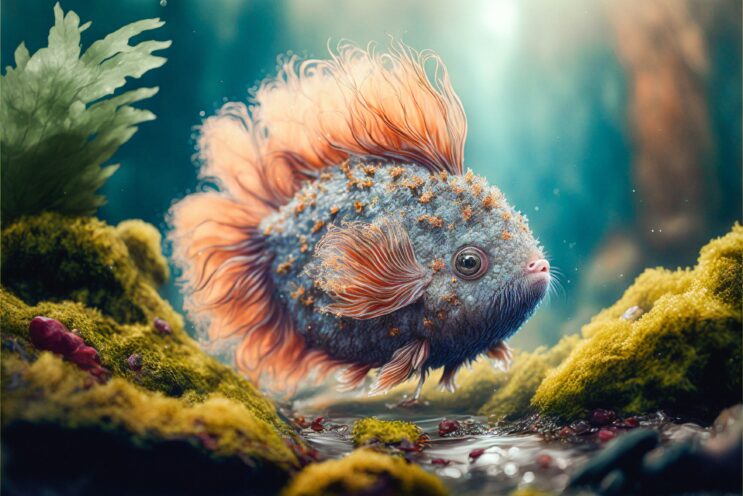If you’ve been playing around with Adobe’s latest AI tools, you’ve probably heard about Photoshop Generative Expand — and if you haven’t, buckle up. This feature is changing the way designers, photographers, and digital artists edit their images. No more awkward cropping or endless cloning. Now, Photoshop literally imagines and builds what’s missing beyond your canvas — intelligently, seamlessly, and in seconds.
As someone who’s been in the Photoshop game for years, I can honestly say: Generative Expand is one of the coolest, most time-saving upgrades Adobe has ever added.
So, let’s talk about what it is, how it works, what you can do with it, and why it’s quickly becoming a must-have tool for every serious creative in 2026.
What Is Photoshop Generative Expand?
In simple terms, Photoshop Generative Expand uses Adobe’s AI engine — Firefly — to intelligently extend your image beyond its original boundaries. You can expand a photo’s canvas and let Photoshop fill in the missing parts using smart generative AI that matches your image’s lighting, texture, perspective, and style.
Say you’ve got a portrait that’s cropped too tight — maybe you cut off someone’s elbow or need more sky above their head. Instead of re-shooting or manually rebuilding the background, you just use the Crop Tool, pull out the canvas, and hit “Generate”. Within seconds, Photoshop AI paints a perfect extension — background, details, and all — that looks like it’s always been there.
Basically, Generative Expand takes what was once a tedious job and turns it into a 5-second creative miracle.
How Does Photoshop Generative Expand Work?
Let’s nerd out for a second — but in plain English.
When you activate Photoshop Generative Expand, Adobe’s Firefly AI analyzes your photo. It studies color gradients, lighting direction, subject placement, and textures. Then it predicts what should exist outside your current frame, generating new pixels that blend flawlessly with the original image.
Under the hood, it’s using advanced diffusion models — similar to those used in tools like Midjourney or DALL·E — but fine-tuned for realistic photo editing instead of full image generation.
And the best part? All of this happens non-destructively. The new area is generated on a separate layer, so you can adjust, mask, or tweak it however you like. You’re still in full creative control.
What Makes Generative Expand Different from Content-Aware Fill?
That’s the first question I always get.
Both Content-Aware Fill and Generative Expand are designed to fill in missing areas of an image — but the difference is in how they think.
- Content-Aware Fill looks at nearby pixels and copies or blends them into empty areas. It’s smart, but limited to what already exists inside your image.
- Generative Expand, on the other hand, can imagine new content that doesn’t exist in your image. It doesn’t just clone — it creates.
So, if you drag out the canvas on a mountain photo, Generative Expand can invent new clouds, trees, or terrain that never existed — but still look totally natural. Content-Aware Fill can’t do that.
In short: Content-Aware Fill = patchwork.
Generative Expand = creative AI magic.
Why Designers and Photographers Love Photoshop Generative Expand
Let’s be real — this tool saves hours of manual work. Before this feature, extending an image meant cloning backgrounds, cleaning edges, painting masks, and praying for smooth blends. Now, it’s click-and-go.
Here’s why it’s such a big deal in the design industry:
- Perfect for Re-Cropping Social Media Photos
Designers can easily adjust photo ratios for Instagram, YouTube thumbnails, banners, or print layouts without losing quality. No more awkward stretches or cut-offs. - Fixing Composition Problems
Need more space around your subject? Want to reposition elements for better framing? Generative Expand makes it effortless. - Restoring Old or Cropped Images
You can bring back missing edges from scanned photos or restore parts of images lost during cropping. - Creating Marketing and Ad Variations
Easily extend a background to fit ad banners or social posts — no need for separate versions. - Leveling Up Creativity
Add storytelling elements around your subject. Turn a basic portrait into a cinematic composition just by expanding the frame.
In short: it’s a creative safety net and an artistic power tool rolled into one.
How to Use Photoshop Generative Expand (Step-by-Step)
Alright, let’s get hands-on. Here’s how to use this feature like a pro.
Step 1: Open Your Image
Start by opening the image you want to extend in Adobe Photoshop 2024 or later (you’ll need an updated version with Firefly AI integration).
Step 2: Select the Crop Tool
Go to the Crop Tool (C) in the toolbar.
Step 3: Extend the Canvas
Drag any edge of your image outward to increase the canvas size. You’ll see transparent space appear around the image — that’s where AI will generate new content.
Step 4: Click “Generative Expand”
When you extend the canvas, Photoshop automatically shows a prompt to “Generate” or “Generative Expand.”
Click it. You can type in a short description like “extend the sky” or “add more forest”, or just leave it blank and let AI decide.
Step 5: Review Variations
In seconds, you’ll get three different AI variations. Pick the one you like best — or regenerate more until you’re happy.
Step 6: Fine-Tune the Result
Because the generated content is on a new layer, you can mask, blend, or adjust it. Play with exposure, color balance, or gradients to match your design perfectly.
Boom. You just expanded your photo like a Photoshop magician.
Pro Tips to Get Better Generative Expand Results
AI is powerful, but it still loves guidance. Here’s how to help it nail your vision:
- Use Clear Prompts
If you want specific elements — say, “add more blue sky and a few clouds” — describe them briefly in the prompt box. - Expand Gradually
Instead of enlarging your canvas 300% at once, expand in smaller chunks. It gives the AI more context and improves realism. - Check Shadows and Light
Sometimes, you’ll need to adjust generated lighting to match your original scene. A quick dodge or burn can help. - Combine Tools
Use Generative Expand first, then refine with Content-Aware Fill, Clone Stamp, or Healing Brush for detailed control. - Blend with Adjustment Layers
A gentle Curves or Color Balance tweak can make the expansion look completely seamless.
Common Questions About Photoshop Generative Expand
Let’s cover the most-asked questions designers have been Googling about this feature.
1. Is Generative Expand Free to Use?
Currently, Generative Expand runs on Adobe’s Firefly credits system. If you have an active Photoshop subscription, you get a set number of monthly credits for AI features like Generative Fill and Expand. Once you run out, you can purchase extra credits or wait for the monthly refresh.
For most regular users, the free credits are more than enough for typical editing work.
2. Do I Need Internet Access?
Yes. Since the AI processing happens on Adobe’s cloud servers, you’ll need an active internet connection to use Generative Expand. The tool sends your prompt and image data to the cloud, generates the new pixels, and brings them back to your Photoshop workspace.
3. Does Generative Expand Work on All Images?
Pretty much — but it shines on images with natural textures like landscapes, architecture, and portraits. For abstract or heavily stylized art, results can vary, so be prepared to regenerate a few times for the best look.
4. Can I Use It for Commercial Projects?
Yes — Adobe Firefly’s AI is trained on licensed and copyright-safe content, which means you can legally use Generative Expand results in commercial projects (ads, posters, packaging, etc.) under Adobe’s standard license terms.
That’s a huge win compared to other AI tools with uncertain usage rights.
5. What’s the Difference Between Generative Expand and Generative Fill?
Think of Generative Fill as Photoshop’s “magic patch” — it replaces or adds elements inside your canvas.
Generative Expand, meanwhile, adds outside your canvas — literally enlarging your image area.
You can use both together: Expand your canvas first, then use Fill to add or edit specific parts.
6. How Do I Access Generative Expand?
If you’re using Photoshop 2024 or newer:
- Open your image
- Select the Crop Tool
- Extend your canvas
- Click “Generative Expand” in the contextual bar
That’s it — no extra plugins needed.
7. Is Generative Expand Better Than Doing It Manually?
For speed and realism — absolutely yes.
For ultra-precise, conceptual edits — sometimes manual control still wins.
Think of Generative Expand as your assistant: it gets you 90% of the way there instantly, and you polish the final 10%.
Creative Ways to Use Photoshop Generative Expand
Let’s go beyond the basics. Here are some fun, creative ways to use this tool like a true AI-driven designer.
1. Create Cinematic Widescreen Looks
Start with a portrait and extend both sides. Add more sky, walls, or landscape — suddenly, you’ve got a cinematic, movie-poster vibe.
2. Build Large Prints from Cropped Images
Got a tight crop that won’t print well? Use Generative Expand to increase resolution and canvas size — perfect for banners and posters.
3. Make Social Media Variations
Convert your square Instagram shot into a vertical Reel cover or a wide YouTube thumbnail without re-shooting anything.
4. Restore Old Photos
When scanning old prints with missing edges, Generative Expand can rebuild torn or faded areas naturally.
5. Experiment with Visual Storytelling
Use prompts like “extend the desert with more dunes” or “add a forest edge”. The results often spark new design ideas you didn’t plan.
Why 2026 Will Be the Year of AI-Powered Creativity
By 2026, AI-driven tools like Photoshop Generative Expand will be standard in every creative workflow. We’re moving from manual editing to intelligent collaboration. Designers won’t just use Photoshop — they’ll co-create with it.
Generative Expand is the start of a new era where creativity meets automation. You’ll spend less time fixing and more time imagining.
And as Adobe keeps refining Firefly’s models, the results will only get sharper, more realistic, and more intuitive.
Imagine extending not just images — but ideas. That’s where we’re heading.
Final Thoughts
The Photoshop Generative Expand tool is more than just a convenience — it’s a revolution in digital design. It gives professionals the ability to reframe, rebuild, and rethink images faster than ever before, while still maintaining total creative control.
Whether you’re a photographer needing breathing room in a shot, a designer crafting dynamic layouts, or a student exploring new ways to work smarter — this feature is a total game-changer.
So next time your image feels too tight, don’t panic — just expand it.
Let Photoshop’s AI fill in the blanks, and see your creativity stretch far beyond the frame.
 Download Free Assets
Download Free Assets